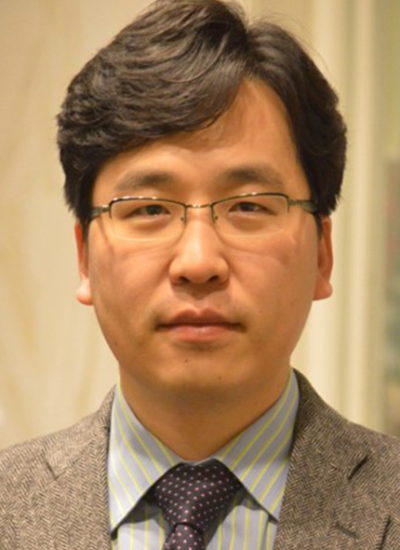Kim, M., Tang, S., & Olsen, B. D. (2013). Physics of Engineered Protein Hydrogels. JOURNAL OF POLYMER SCIENCE PART B-POLYMER PHYSICS, 51(7), 587-601.
Wang, R., Sing, M. K., Avery, R. K., Souza, B. S., Kim, M., & Olsen, B. D. (2016). Classical Challenges in the Physical Chemistry of Polymer Networks and the Design of New Materials. ACCOUNTS OF CHEMICAL RESEARCH, 49(12), 2786-2795.
Ke, C., Loksztejn, A., Jiang, Y., Kim, M., Humeniuk, M., Rabbi, M., & Marszalek, P. E. (2009). Detecting solvent-driven transitions of poly(A) to double-stranded conformations by atomic force microscopy. Biophysical journal, 96(7), 2918-25.
We report the results of direct measurements by atomic force microscopy of solvent-driven structural transitions within polyadenylic acid (poly(A)). Both atomic force microscopy imaging and pulling measurements reveal complex strand arrangements within poly(A) induced by acidic pH conditions, with a clear fraction of double-stranded molecules that increases as pH decreases. Among these complex structures, force spectroscopy identified molecules that, upon stretching, displayed two distinct plateau features in the force-extension curves. These plateaus exhibit transition forces similar to those previously observed in native double-stranded DNA (dsDNA). However, the width of the first plateau in the force-extension curves of poly(A) varies significantly, and on average is shorter than the canonical 70% of initial length corresponding to the B-S transition of dsDNA. Also, similar to findings in dsDNA, stretching and relaxing elasticity profiles of dspoly(A) at forces below the mechanical melting transition overlap but reveal hysteresis when the molecules are stretched above the mechanical melting transition. These results strongly suggest that under acidic pH conditions, poly(A) can form duplexes that are mechanically stable. We hypothesize that under acidic conditions, similar structures may be formed by the cellular poly(A) tails on mRNA.
Callahan, D. J., Liu, W., Li, X., Dreher, M. R., Hassouneh, W., Kim, M., Marszalek, P., & Chilkoti, A. (2012). Triple Stimulus-Responsive Polypeptide Nanoparticles That Enhance Intratumoral Spatial Distribution. NANO LETTERS, 12(4), 2165-2170.
Kim, M., Gkikas, M., Huang, A., Kang, J. W., Suthiwangcharoen, N., Nagarajan, R., & Olsen, B. D. (2014). Enhanced activity and stability of organophosphorus hydrolase via interaction with an amphiphilic polymer. Chemical communications (Cambridge, England), 50(40), 5345-8.
A simple approach to enhancing the activity and stability of organophosphorus hydrolase (OPH) is developed based on interactions between the hydrophobic poly(propylene oxide) (PPO) block of amphiphilic Pluronics and the enzyme. This strategy provides an efficient route to new formulations for decontaminating organophosphate neurotoxins.


